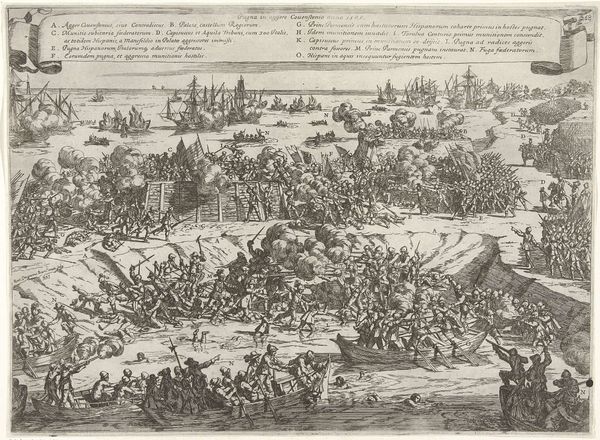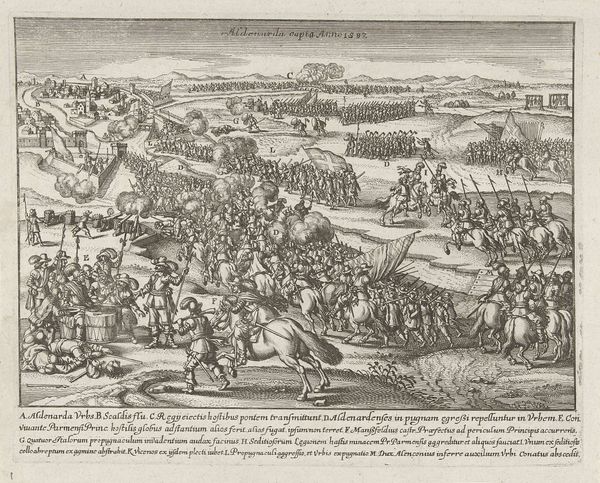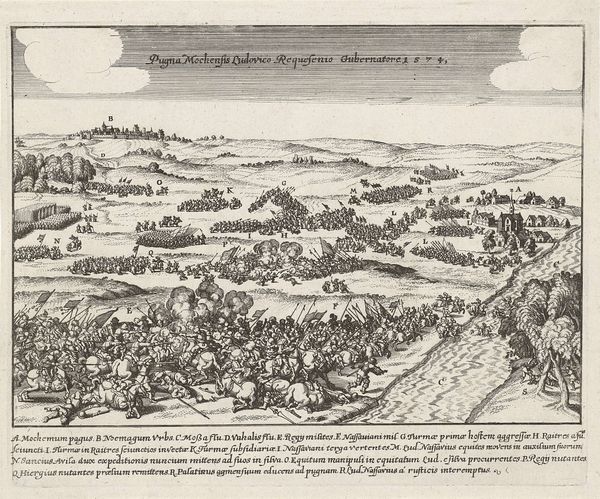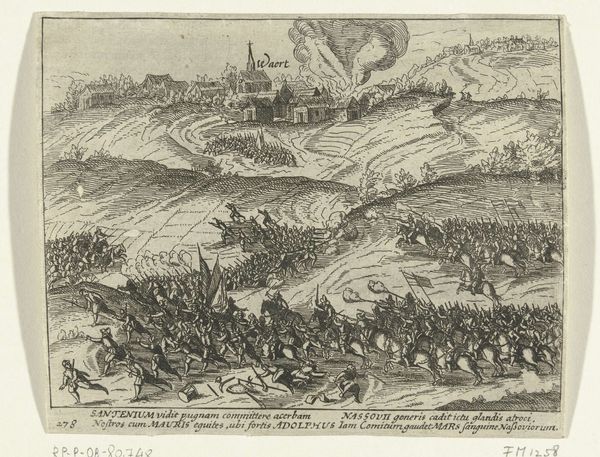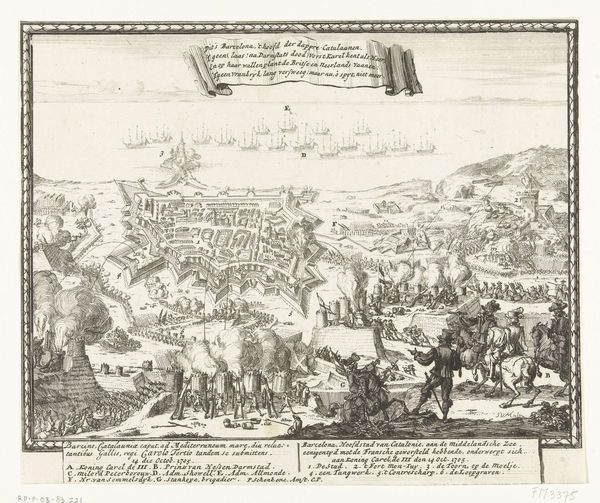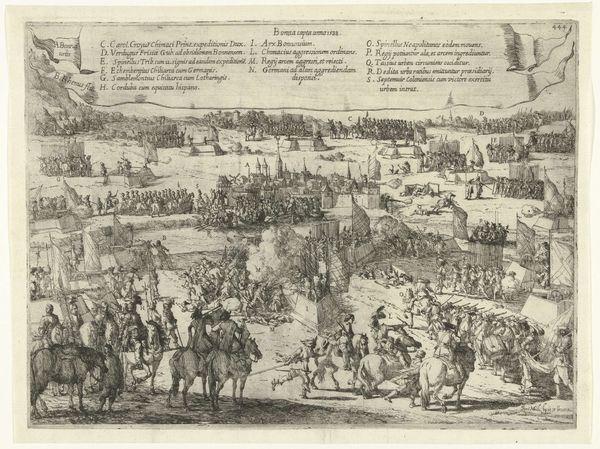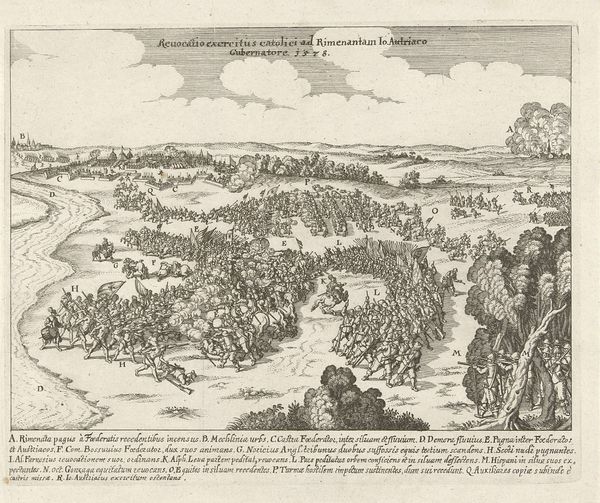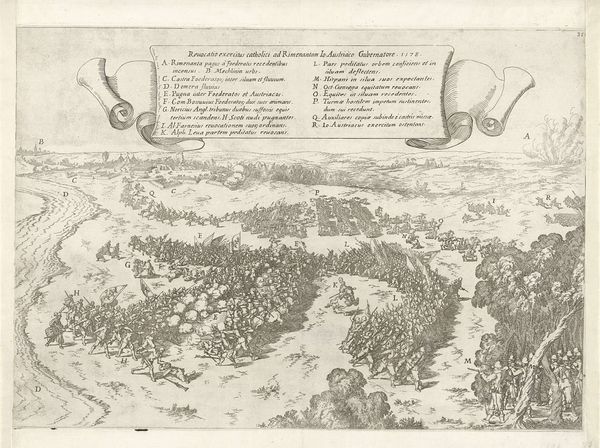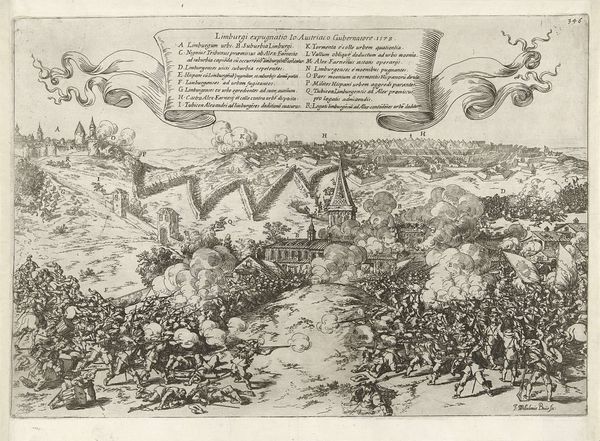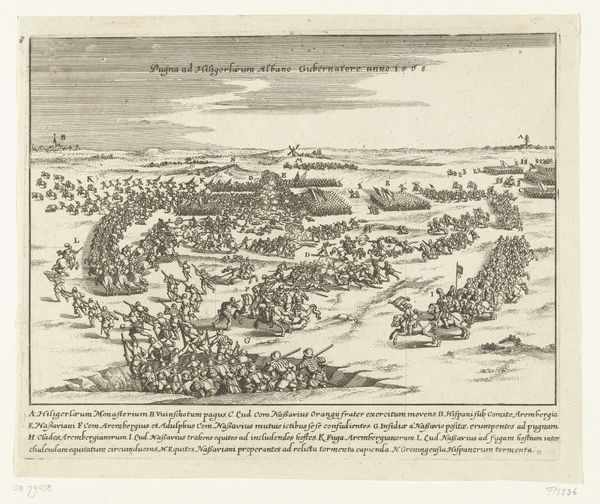
print, engraving
#
medieval
# print
#
figuration
#
geometric
#
line
#
genre-painting
#
history-painting
#
engraving
Dimensions: height 225 mm, width 283 mm
Copyright: Rijks Museum: Open Domain
Curator: Let’s discuss "Strijd om de Kauwensteinse dijk, 1585," an engraving dating from 1649-1651, though depicting events from much earlier. Immediately, I'm struck by the density of detail, the sheer volume of tiny, frantic figures crammed onto this relatively small print. It's a chaotic yet strangely organized scene. Editor: The visual cacophony you describe is immediately palpable. I sense the trauma embedded within the image, a palpable feeling of violence. The fact that it's an engraving is fascinating; it positions this historical battle within a certain framework of production and accessibility. How did prints like this circulate and influence public perception of such events at the time? Curator: Well, these kinds of prints were often commissioned and distributed to commemorate important events, in this case likely offering a Dutch perspective on the Eighty Years’ War. It’s interesting to consider the labor involved in its creation. Each line meticulously etched to create this scene of war speaks to a specific type of craft. The materiality of the print itself, the paper and ink, further contextualizes its accessibility as a widely distributed medium during the period. Editor: Right, the widespread availability of prints like this complicates our understanding of the period. And looking at this "Strijd om de Kauwensteinse dijk", what narratives are emphasized, what roles do gender or class play in shaping the unfolding battle? It demands a deeper understanding of power structures embedded in that historical conflict. Curator: Definitely, the level of detail allows for an examination of both the large strategic maneuvers and the more individual stories being told through the action of the combatants. How the battle itself might reflect societal expectations around labor and value is important as well. Where did resources come from, and who stood to gain or lose based on its outcome? Editor: And it seems, the intent is clearly to create a certain viewpoint on it, what do we learn when we examine such depictions alongside more intimate testimonies of soldiers, of civilians impacted by this battle, or the lived experience? How the visual grammar and medium come together and are used, consciously or unconsciously, in pursuit of a narrative goal. Curator: A complex piece. It's given me a new appreciation for the labor involved, the context in printmaking techniques of the time, and how prints such as this helped disseminate information during an era of conflict. Editor: Agreed, viewing art through the lens of production offers crucial context while centering social narratives fosters a more inclusive approach to understanding historical art. It calls to the important issues around labor, power and viewpoint that affect all readings and interpretations of artwork from across the ages.
Comments
No comments
Be the first to comment and join the conversation on the ultimate creative platform.
